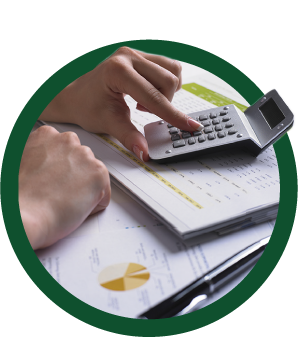4 de abril de 2024
Blockchain and E-Invoicing in Colombia
After several decades, the billing system has achieved stability as a tool of efficiency in the control and collection of taxes by the state, as a business tool regarding factoring, and there is even a better understanding of the Colombian Courts of how to collect debts. based on electronic invoices that have not been paid. The invoices in physical format will disappear soon from the Colombian economy and this is a very important factor that can encourage the formalization of many businesses and the popular economy, that is, the economy of traditionally marginalized sectors, whether in large cities or in regions far from economic centers. To the extent that electronic invoicing has become mandatory for companies in Colombia, cybersecurity risks have increased. It is evident that many companies have the duty to adopt the digital billing system but for that reason they do not adopt information security policies nor do they acquire tools or advice to improve the cybersecurity of information systems.
The challenges to come now have to do with issues such as cybersecurity in electronic invoicing, the link to invoicing to transport and international trade documents and the massification of electronic factoring. One of the routes to explore in the short term is the use of blockchain platforms for the creation and exchange of electronic invoices.
Electronic invoices (e-invoices) and blockchain are two technologies that can be integrated to enhance the efficiency, security, and transparency of financial transactions. Blockchain is a decentralized and distributed ledger that records transactions across a network of computers. Once a (information) block is added to the chain, it cannot be altered, ensuring the integrity of the data. The transparency of the blockchain allows all participants to view the transaction history.
Digital transformation of a company and e-invoicing
Implementing e-invoicing can serve as a foundational element for the digital transformation of a company, offering numerous benefits that go beyond just the finance and accounting departments.
E-invoicing automates the invoicing process, reducing manual efforts, minimizing errors, and accelerating the entire invoicing lifecycle. The automation of invoicing workflows can lead to faster approvals, quicker payment cycles, and improved overall operational efficiency. By eliminating paper-based processes, companies can save costs related to printing, postage, and storage, contributing to a more sustainable and cost-effective approach.
Automation reduces the likelihood of errors in invoicing, helping avoid costly mistakes and the need for manual corrections. E-invoicing provides real-time visibility into the status of invoices, allowing better tracking and management of cash flows. Centralized electronic records facilitate better control and management of financial data, enabling improved decision-making.
E-invoicing systems often come with features that help companies comply with local and international invoicing regulations, reducing the risk of non-compliance penalties. The digital nature of e-invoices allows for detailed audit trails, making it easier for companies to demonstrate compliance during audits. E-invoicing systems generate structured and easily accessible data. This data can be leveraged for analytics, providing insights into spending patterns, vendor relationships, and financial performance. Integration with Enterprise Resource Planning (ERP) systems allows for seamless data flow, enabling more comprehensive analytics and reporting capabilities.
E-invoicing often leads to faster payment cycles, improving relationships with suppliers. Digital communication channels associated with e-invoicing can foster better collaboration and communication between a company and its partners. E-invoicing systems typically employ robust security measures, reducing the risk of data breaches and ensuring the confidentiality of financial information. Electronic and digital signatures and encryption technologies can be employed to enhance the security of e-invoices, mitigating the risk of fraud. E-invoicing solutions can easily scale to accommodate the growth of a company, making them suitable for businesses of various sizes. E-invoicing can serve as a foundation for integrating with other emerging technologies, such as blockchain or artificial intelligence, in the future.
For instance, AI technologies, such as optical character recognition (OCR) and natural language processing (NLP), can be applied to automatically extract relevant information from invoices. This eliminates the need for manual data entry, reducing errors and speeding up the processing time. AI algorithms can also be employed to match invoice details with purchase orders and delivery receipts, ensuring accuracy and automating the reconciliation process.
To sum up, e-invoicing forms a critical component of a company’s digital transformation journey, contributing to operational efficiency, cost savings, compliance, and improved decision-making capabilities. It aligns with broader efforts to embrace digital technologies and positions the organization for further innovations in the digital era.
Blockchain and e-invoicing in transport and logistics
Blockchain can enhance transparency by providing a tamper-proof and immutable ledger for supply chain transactions. Different stakeholders in the transport and logistics industry may use diverse data formats and systems. Implementing standardized data structures compatible with blockchain is an ongoing challenge. The Internet of Things (IoT) plays a crucial role in tracking and monitoring goods in transit. Integrating IoT data with blockchain for real-time visibility poses technical challenges but is essential for comprehensive supply chain solutions.
Adhering to existing regulations while implementing blockchain solutions can be complex. Regulatory bodies may need to develop guidelines that address the unique aspects of blockchain in transport. The initial costs of implementing blockchain solutions and ensuring the necessary infrastructure can be substantial. Companies need to weigh the potential benefits against these costs.
The Bolero platform, for instance, provides solutions for the digitization of trade documentation and the management of trade finance processes, particularly in the realm of international trade and shipping. Bolero facilitates the electronic issuance, presentation, and transfer of key trade documents, such as bills of lading, invoices, and letters of credit.
This platform aims to streamline the traditional paper-intensive processes associated with international trade. Digitalizing documents can reduce errors, enhance efficiency, and provide a more secure and transparent environment. Bolero enables secure communication and collaboration among different parties involved in a trade transaction, including exporters, importers, banks, shipping companies, and other intermediaries.
One significant aspect is the electronic management of bills of lading, which are crucial documents in international trade. Electronic bills of lading can expedite the transfer of goods and reduce the time and costs associated with physical document handling. Bolero’s platform often integrates with trade finance systems, allowing for more efficient processing of letters of credit and other financial instruments used in international trade.
Bolero provides a global network that connects various participants in the trade ecosystem, fostering collaboration and communication across borders. The digitalization of trade documents on the Bolero platform can contribute to risk mitigation by reducing the potential for fraud and errors associated with paper-based documentation.
Blockchain technology enhances cybersecurity in documents used in transport and logistics primarily through its inherent features of immutability, decentralization, and cryptographic security. Once data is recorded on a blockchain, it becomes extremely difficult to alter or delete it. Each block in a blockchain contains a cryptographic hash of the previous block, creating a chain of blocks that are inherently linked. Any attempt to alter data in a block would require altering all subsequent blocks, which is computationally infeasible due to the decentralized and distributed nature of blockchain networks. This immutability ensures that once a document is recorded on the blockchain, its integrity is preserved, making it highly resistant to tampering. Traditional document management systems typically rely on centralized servers, making them vulnerable to single points of failure and hacking attacks. In contrast, blockchain operates on a decentralized network of nodes, where each node stores a copy of the entire blockchain. This decentralized nature eliminates the reliance on a single central authority, reducing the risk of data breaches and unauthorized access. Even if some nodes are compromised, the integrity of the overall network remains intact, enhancing the security of documents stored on the blockchain.
Blockchain employs advanced cryptographic techniques to secure transactions and data. Each transaction or document update is cryptographically signed, ensuring that only authorized parties can make changes to the data. Public-key cryptography is commonly used to authenticate users and validate transactions, ensuring that only users with the correct private keys can access and modify the documents. This cryptographic security adds an additional layer of protection against unauthorized access and tampering. Blockchain provides transparency by maintaining a complete and transparent record of all transactions or document updates on the network. Every change made to a document is recorded on the blockchain, along with a timestamp and cryptographic signature, enabling easy traceability and auditability. This transparency helps to detect any unauthorized changes or malicious activities, enhancing the overall security of documents stored on the blockchain.
Overall, blockchain technology offers significant improvements in cybersecurity for documents by providing immutability, decentralization, cryptographic security, transparency, and automation. These features help mitigate the risks associated with traditional document management systems and enhance the integrity, confidentiality, and availability of sensitive information.
Integration of e-Invoices and Blockchain:
Blockchain platforms often support smart contracts, which are self-executing contracts with the terms of the agreement directly written into code. Smart contracts can automate various processes in e-invoicing. Storing e-invoices on a blockchain provides an immutable record of all transactions. This helps prevent fraud and ensures the integrity of the invoicing process. Participants in the network can trace the entire history of transactions, providing transparency and accountability in the invoicing process.
The immutability of blockchain ensures that once an invoice is created and agreed upon, it cannot be altered. This reduces the risk of fraudulent activities. Smart contracts can automate various aspects of the invoicing process, such as payment verification, triggering automatic payments when conditions are met, and updating records across the network.
Blockchain provides a transparent and auditable trail of transactions, making it easier for auditors to verify the accuracy and legitimacy of financial records. Automation, reduced fraud, and improved efficiency can lead to cost savings for businesses involved in the invoicing process. Achieving widespread adoption and standardization of blockchain-based e-invoicing systems may require collaboration among businesses and regulatory bodies.
Ensuring that the blockchain network can handle a large volume of transactions is crucial for the scalability of the system. Businesses may face challenges when integrating blockchain-based e-invoicing with their existing systems.
In summary, integrating e-invoices with blockchain technology can enhance the security, transparency, and efficiency of the invoicing process. It requires careful consideration of technical, regulatory, and business challenges to realize its full potential. In the case of Colombia’s regulation on electronic invoices, progress must be made in incorporating, for now in the sandbox planned by DIAN (Colombian Tax Authority), standards that allow the use of artificial intelligence and blockchain in the management and handling of electronic invoices.
Artículos Recientes
¡Ya está disponible el caso! Segunda versión del Concurso Laboratorio de Estrategia Legal #LSL
Invitamos a los estudiantes de pregrado y postgrado de todas las carreras a presentar [...]
Masterclass Legal Operations: Transformando la Función Legal Empresarial de Guardián de Riesgos a Creador de Valor.
El Departamento de Derecho de los Negocios y la Facultad de Administración de Empresas [...]
Conclusión del Proceso de Reforma al Investor-State Dispute Settlement
En la semana del 12 de julio de 2023, durante la sesión anual de [...]
El Departamento de Derecho de los Negocios de la Universidad Externado de Colombia abre convocatoria para la vacante de Asistente de Investigación
¡Sé parte de nuestro equipo de trabajo! Perfil del cargo: Asistente de Investigación Apoyar [...]
Docente del Departamento de Derecho de los Negocios participó en el libro Blanco de la Asociación de Derecho Internacional
La Asociación de Derecho Internacional (ADI), una de la organizaciones más antiguas y prestigiosas [...]
Especialización en Contratación Internacional
Bogotá – Presencial Duración: 1 año Contacto: contratacioninternal@uexternado.edu.co; dernegocios@uexternado.edu.co La Especialización en Contratación Internacional es [...]
CRYPTO IN COLOMBIA: PROSPECTIVE 2022
By: Daniel Peña Valenzuela The volatility of the main cryptocurrencies seems to be once [...]
Convocatoria de Monitores.
El Departamento de Derecho de los Negocios se complace en anunciar la apertura para [...]
¿Se avecina una regulación de la Franquicia por parte del Gobierno? ¿O lo impedirá la Corte Constitucional?
Por: Juan Miguel Álvarez* y Diana Marcela Araujo* En diciembre del 2020, el congreso [...]
¡Vuelven las Jornadas de Arbitraje de la Universidad Externado de Colombia para hablar de daños en el arbitraje internacional!
La determinación de los daños en arbitrajes internacionales es una de las cuestiones que, [...]
¡Celebración del éxito académico!
El pasado viernes 5 de julio tuvimos el honor de compartir el almuerzo de [...]
Masterclass: LegalTech 101: ¿Cómo potenciar tu gestión legal diaria a través de herramientas no-code? – Una antesala de nuestro diplomado en Transformación Digital para la Gestión Legal
Fecha y hora: 11 de julio, 5:00 p.m. En un mundo donde la tecnología [...]
¡No te pierdas el 40° Congreso Nacional de Derecho Comercial en Medellín!
Nos complace extenderles una cordial invitación para formar parte del 40° Congreso Nacional de [...]



















